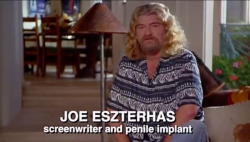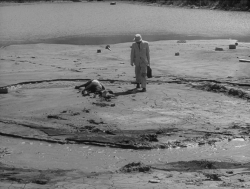Reviews
Agnès Varda
US / France, 1981
Credits
Review by Evan Kindley
Posted on 30 July 2010
Source MUBI.com
Categories Viva Varda: The Films of Agnès Varda
The words “culture in Los Angeles” usually elicit one of three typical responses: (a) outright laughter; (b) some nth-generation echo of Theodor Adorno’s ancient invective against “the culture industry”; or, more rarely, (c) a romantic evocation of endless summers of aimless grooviness, as in Thomas Pynchon’s recent novel Inherent Vice, or the current craze for indie rock bands with “beach,” “wave,” or “coast” in their names. In Agnès Varda’s earlier films about L.A. - principally her 1969 “head movie” Lions Love - she hewed closest to the third alternative, succumbing to some of the California elite’s silliest illusions about themselves. When she returned in 1980, however, the city showed her a different face. With the focused attention that only a foreign observer can muster, she fixed not on the city’s seedy glamour or considerable natural beauty but on the many full-scale outdoor murals to be found in Los Angeles, seeing in them a simultaneous expression of the city’s utopian promise and the residents’ alienation. The rare artist who can interest herself totally in others’ art-making, Varda set out to document the wealth of murals in the Los Angeles area, giving the resulting film the clever bilingual title Mur murs—“Wall walls” in French, but also playing on the suggestive murmurs that these images give us of the lives lived behind and around them.
With a few exceptions, Mur murs focuses on three primary areas of Los Angeles: the seaside bohemian haven of Venice Beach, the largely African-American neighborhoods of Watts and Compton, and the Mexican-American/Chicano-populated east L.A. The contrasts between these locations are stark, though there are certain underlying similarities. In Venice, surfers idle by and roller skaters jump over trash cans and cement blocks as a bubbly disco track promises “joy” to everybody in earshot, the only signs of straight-world authority a few local beach cops in shorts and T-shirts with white socks pulled up to their calves. The subjects here are mostly pastoral (a forest scene livening up Lincoln Boulevard, affectionately referred to by one resident as “the ugliest street in the world”) or classical (a Roman piazza graces the wall of a boardwalk ice cream store), and the justification for public art here is purely aesthetic: “Even if they see it for three seconds, they’ve been exposed to art and beauty,” one resident enthuses.
In Watts, by contrast, murals serve social purposes: the Afro-Futurist motifs - star children, globes, pyramids, Sphinxes, swooping, sinuous lines of solid color - that grace the walls of Willowbrook High School, whose student body has “one Caucasian, five Samoans, and the rest are black,” are meant to inspire the children to higher pursuits than drugs or gang violence. The point of art is seen as not reflection but propaganda—one painter of elegant floral scenes was “asked by the Black Panthers why I didn’t paint fists and rifles.” This is a long-standing tension in the African-American community that dates back to the days of W.E.B. Du Bois, but Varda - a consummate French aesthete, if she’s anything - marvels at it as if for the first time.
But Mur murs spends the most time in Hispanic-dominated east L.A., where the lines between self-expression, political purposiveness and advertising are at their blurriest. It’s these neighborhoods that supply a lot of the most striking iconography in the film, which ranges freely from the Gothic (skulls and skeletons and other Day of the Dead motifs) to the Biblical (Christ, Adam and Eve, angels of all varieties) to the historical (portraits of Abraham Lincoln, John F. Kennedy, and Che Guevara). Fittingly for a people who declare themselves unable to identify with either Mexicans or white Americans, many murals summon up alternate versions of US history: most strikingly, a mural that comments on Thomas Edison’s Mexican heritage by depicting an Aztec goddess inspiring him to invent the light bulb and the movie camera. Certainly, the special richness of the visual culture in east L.A. seems to be an inheritance from Mexico, where, one of Varda’s subjects tells us, “[w]riting on the wall was a way of life.” (In one of the film’s looser moments, Varda includes testimony from an elderly white woman who grew up in east L.A. before it became a Mexican enclave: ‘We never had murals ‘til they came from the other side. And then they brought their murals with ‘em, in their minds and in their souls. It’s so Latin to paint the walls. They paint everything…. That’s how they tell you that they’re Mexican!” She then breaks into song.)
Varda focuses particularly on the Eastside housing project Ramona Gardens, which houses some 610 families, of which 99% are Hispanic, 1% black. Here, too, as in Watts, the murals serve definite communal functions, though they’re less often those of social uplift than of mourning (like “In Memory of a Home Boy,” its title emblazoned on a banner streaming from an eagle’s mouth) or protest (like Wayne Alanis Healy’s “Ghosts of the Barrio,” which incorporates the old Zapatista slogan “TIERRA Y LIBERTAD”). There’s an intriguing fatalism to many of the images Varda records in east L.A., bordering on apocalypticism at times—Willie Herrón’s nightmare sci-fi jumbles of autopsies and H-bombs, for instance, suggest a twentieth-century Hieronymus Bosch.1 This stylized violence is most likely a sublimated version of the anger, especially against the police, that emerges in brief interviews with Ramona residents, and in a furious performance by Chicano punk rock band the Illegals.
Still other murals in east L.A. also serve more prosaic, commercial purposes, like the three-story portrait of a bride and groom that advertises the Monarch Bridal Shop. In turning the extravagance of mural painting to practical effect, these savvy businessmen are not so different from their counterparts in other parts of the city, like the owners of the Farmer John Brand Clougherty Meat Packing Company factory in nearby Vernon, CA who commissioned a full-scale bucolic landscape to cover the entire 30,000 square foot circumference. In Los Angeles - as in most parts of America, only more so - large-scale corporate promotion frequently blends into expressions of public creativity and local color (a situation Varda wryly acknowledges by making one of the film’s first shots of a Dr. Pepper billboard). This distinctly Angeleno interpenetration of official and unofficial image-repertoires bestows a pop zest on even the anti-capitalist agitprop in the film - like the mobile murals laid on the flatbed of trucks and transported around the city to serve as portable propaganda, meant to highlight the “separation of the world of work and the world of money” - and it’s an all-mixed-up aesthetic that has left its mark on the sensibilities of the city’s fine artists from Ed Ruscha to Wayne White.
As one would expect from a city so closely associated with the movies, there’s a keen awareness of the film industry and film history as a source of hometown pride and arcane lore: celebrity portraits range from the easily recognizable (Charlie Chaplin, Glenn Miller, and Fats Domino) to the obscure (Western heavy Strother Martin, Lone Ranger star Clayton Moore) to the very obscure (Lillian Bronson, Jan Clayton, Billy Gray). (Surprisingly, the period iconography one might expect to find in evidence - Star Wars, Rocky, Jaws, et al. - is totally absent, though perhaps this was a conscious editing decision on Varda’s part.)
Varda’s film is unusual for her in that she limits her own incursions into the territory she documents. (She saved that for Documenteur, the fiction film she made immediately following Mur murs, using many of the same locations.) There is less of the playful tinkering with reality that characterizes her earlier non-fiction films like Uncle Yanco or more recent work like The Beaches of Agnès: unobtrusive narration by Varda, with whispered interjections (or “murmurs”) by her son Mathieu Demy, is about the extent of it. The one grace note - the occasional filmed encounter between Los Angeles residents and French actress Juliet Berto, familiar from many of Godard’s late 60s films and Rivette’s Céline and Julie Go Boating - feels vestigial, as if Varda decided against the decision to use her in editing, though she does help make a thematic connection between the West Coast and the Rive Gauche. The director’s ceding of artistic control to the muralists mirrors those artists’ own recognition that their work, by its very nature, belongs not to them but to the public: “If there are any dreams involved it’s everybody dreaming together rather than me,” as one puts it.
This skirts one of the great idées reçues about Hollywood, and by extension Los Angeles: that it is some kind of expression of a collective unconscious, either of America or of the entire world. But to her credit, Varda focuses less on this mystification and more on the material conditions that allow murals to proliferate in Los Angeles: the year-round abundance of sunlight and pleasant working weather, the clear sight lines afforded by relative sparseness of the architecture, the indifference to property values in impoverished neighborhoods, and, most of all, the excess creative energy of a populace surrounded on all sides by mass media but shut out from the means of producing and disseminating such images themselves. Unlike the global pronouncements of Hollywood - or those of an established avant-garde filmmaker like Varda, for that matter - these murmurs won’t carry much farther than those listeners in the immediate vicinity; almost all of the murals depicted in Mur murs are long gone, and many have left no trace other than in Varda’s film. But of course the artists who make murals are well aware of their “very ephemeral nature,” as one of them puts it; “you have to accept the fact that they fade, they get mutilated.” This doesn’t stop them from painting, especially since the fragile, temporary character of their work has social compensations: for them, it’s “more important to make a vital work of art in a functioning environment” than to craft something that could be bought, sold, kept, or archived. Mur murs restores some of the contours of that environment: the best we can hope for, under the circumstances.
- Herrón later shows up as one quarter of the radical art collective ASCO (Spanish for “nausea”), who Varda films performing one of their “No Movies”.↩
More Viva Varda: The Films of Agnès Varda
-
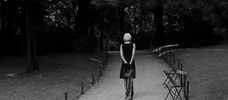
Cléo from 5 to 7
1962 -
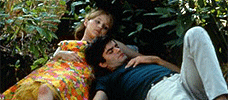
Le Bonheur
1964 -
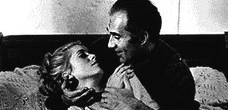
Les Créatures
1966 -
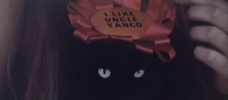
Uncle Yanco
1967 -
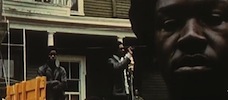
Black Panthers
1968 -
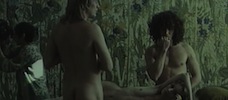
Lions Love
1969 -
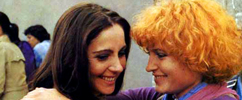
One Sings, the Other Doesn’t
1977 -

Daguerréotypes
1976 -
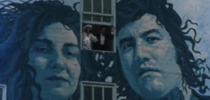
Mur murs
1981 -

Vagabond
1985 -
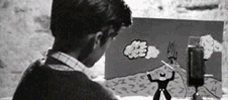
Jacquot de Nantes
1991 -

One Hundred and One Nights of Simon Cinéma
1995 -
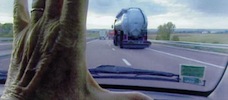
The Gleaners and I
2000 -

Cinévardaphoto
2004 -

The Beaches of Agnès
2008
We don’t do comments anymore, but you may contact us here or find us on Twitter or Facebook.

